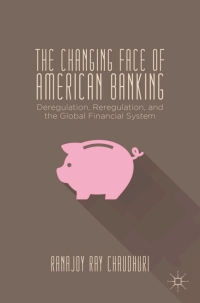



ForestLand Wood Products manufactures lumber and wood components. The company has two main product lines: Hardwood and Softwood. Hardwoods are used for flooring, cabinetry, paneling, doors and trimwork. Softwoods are used for wall studs, joists, planks, rafters, beams, stringers, posts, decking, subflooring and concrete forms. Forestland also sells a by-product, wood shavings and saw dust. Shavings are purchased for farm and industrial use as well as for further processing into wood pellets and fiber board. The revenue is allocated to each product line based on the percentage of thousand board feet produced by the product line. Your accounting firm has been retained by ForestLand for three years. You have been assigned to properly allocate support department costs. Your manager wants the allocation to be as accurate as possible and has instructed you to use the reciprocal services method. She reminds you that revenue from by-products are used to offset costs. You begin your research and learn that there are four production departments: log yard, milling, drying, and packaging. The Hardwood line produces 300 thousand board feet of product while the Softwood produces 900 thousand board feet. The milling department direct costs, direct labor and overhead per thousand board feet for Hardwood is two times that of Softwood. You have been instructed to use the weighted average method to allocate the costs in the milling department between the two product lines. The remaining department costs are the same for both product lines, per thousand board feet. . There are two support departments: maintenance and administration. The maintenance department is responsible for maintaining all equipment and janitorial duties. Because the equipment is used more extensively for hardwoods, the department cost driver is hours worked. The administration department includes the company president and his staff. Their duties include accounting, human resources, and information technology. The cost driver for the administration department is number of employees. In your first step, you determine the costs traced to each department and the usage of the support department cost drivers. You have created the following table: Maintenance Administration Log Yard Milling Drying Packaging Hours worked 8,100 25,920 16,200 21,060 Number of employees 5 12 16 8 Department costs $176,000 $216,275 $309,940 $747,000 $433,160 $224,000 Your next step is to determine the proportional usage of each support department's cost driver by the other departments to which its costs are to be allocated. Complete the following tables. 11,000 9,720 8 6 Maintenance Department Hours Worked Usage Percent Administration % Log Yard Milling Drying Packaging Totals % Administration Department # of Employees Usage Percent Maintenance % Log Yard Milling Drying Packaging Totals Using the cells below, create the formulas that will simultaneously allocate support department costs among the departments. "M" represents Maintenance and "A" represents Administration. M - $ % 2 Check My Work Using the cells below, create the formulas that will simultaneously allocate support department costs among the departments. "M" represents Maintenance and "A" represents Administration. M-S + % A-$ $ + % Solve the equations, If required round any decimal to three places in your computations. For example, .0183 would be rounded to .018. Round your final answer to the nearest dollar. M-$ - A=S - Feedback Check My Work Use the following table to allocate the support cost departments. Round allocated amounts to the nearest whole dollar. If an amount is zero, enter "o". Production Departments Support Departments Maintenance Administration Log Yard Milling Drying Packaging Hours worked Number of employees Department cost $ s Maintenance Administration Final department costs $ $ $ Feedback Check My Work Using the rounded amounts from the support cost allocation table (previous task), complete the following table to allocate the production department costs to each product line. Round allocated amounts to the nearest whole dollar Thousand Board Feet Weight Factor Weighted Thous. Bd. Ft. Weighted % of Board Feet Final Department Cost Allocation to Product Line Costs Log Yard: Hardwood 1 300 25 % x 300 900 Softwood 1 900 75 X Total Log Yard 1,200 2 1,200 100 % $ Milling: Hardwood 300 21 600 40 % x 859,690 X Softwood 1 900 60 X 900 1,200 Total Milling 3 1,500 100% Drying: Hardwood 300 1 300 25 % x Thousand Board Feet Weight Factor Weighted Thous. Bd. Ft. . Weighted % of Board Feet Final Department Costs Cost Allocation to Product Line Log Yard: Hardwood 1 1 300 25 % x 300 900 Softwood 1 900 75 X Total Log Yard 1,200 2 2 1,200 100 % $ Milling: Hardwood 300 2 600 40 % 859,690 X Softwood 900 1 900 60 Total Milling 1,200 1,500 100 % Drying: Hardwood 1 300 25 % x 300 900 Softwood 1 900 75 X Total Drying 1,200 2 2 1,200 100 % Packaging: Hardwood % x Softwood Total Packaging % Feedback Check My Work Forest Land earns revenue of $100,000 from selling its by-products, wood shavings and saw dust. Allocate the revenue to each product line in the following table and determine the final cost per product line. Thousand Board Feet Percentage of Board Feet By-product Revenue Portion of By- product Revenue Hardwood % % $100,000 Softwood 100,000 Total % Cost per Product Line Hardwood Softwood Log Yard Milling Drying Packaging Subtotal $ Portion of By-product revenue chade Mode Forest Land earns revenue of $100,000 from selling its by-products, wood shavings and saw dust. Allocate the revenue to each product line in the following table and determine the final cost per product line. Thousand Board Feet Percentage of Board Feet By-product Revenue Portion of By- product Revenue Hardwood % $100,000 Softwood 100,000 Total % Cost per Product Line Hardwood Softwood Log Yard Milling Drying Packaging Subtotal $ Portion of By-product revenue Total cost per product line Feedback










